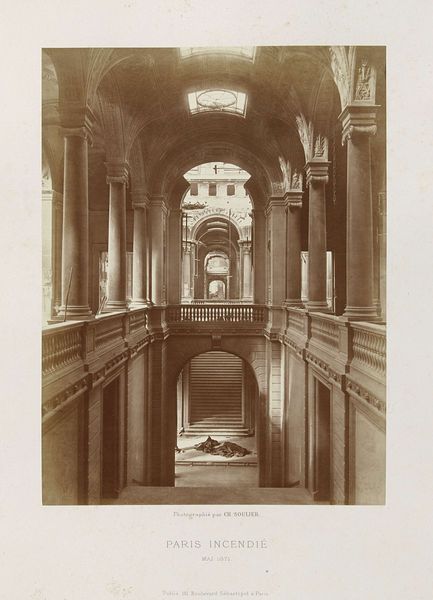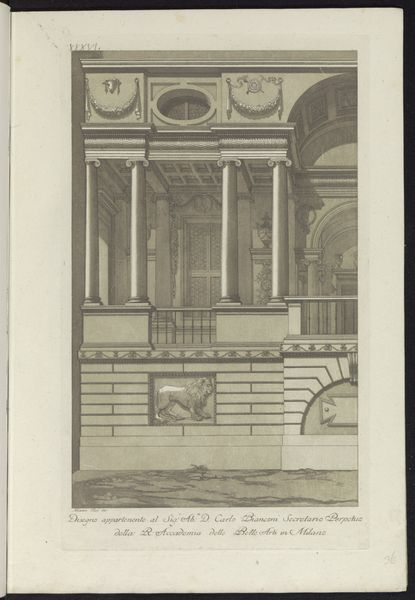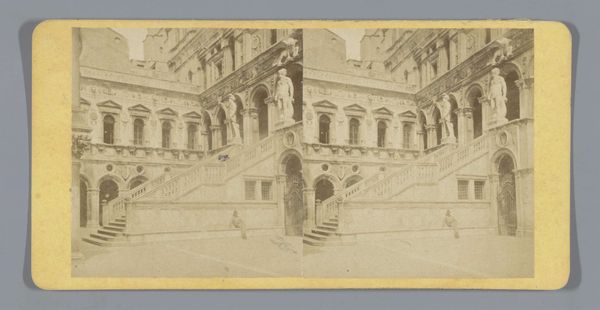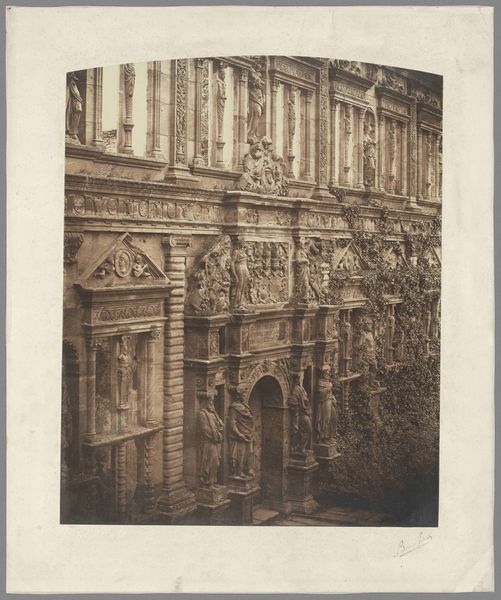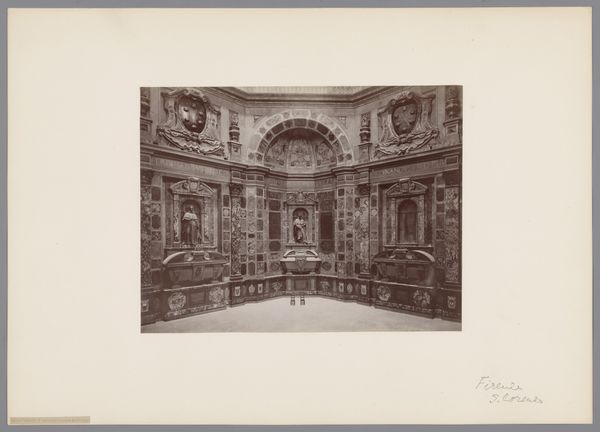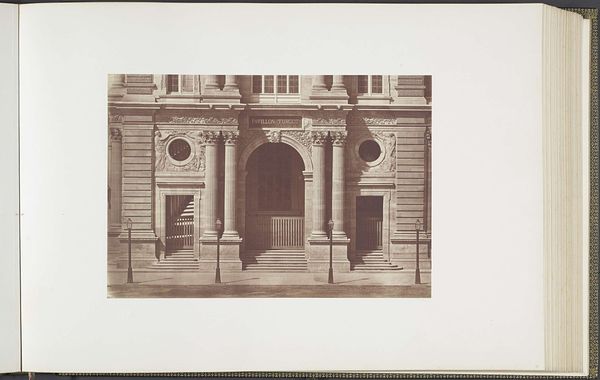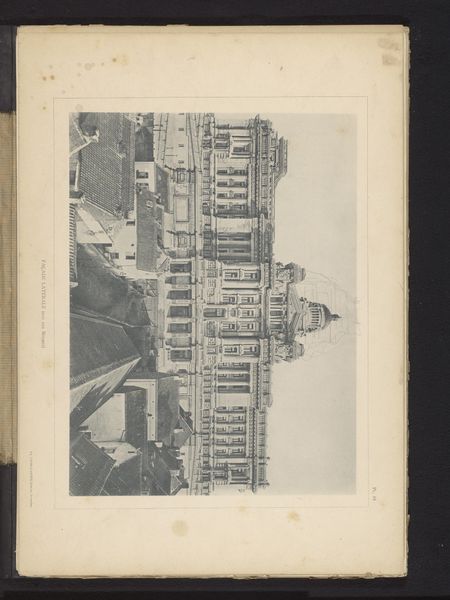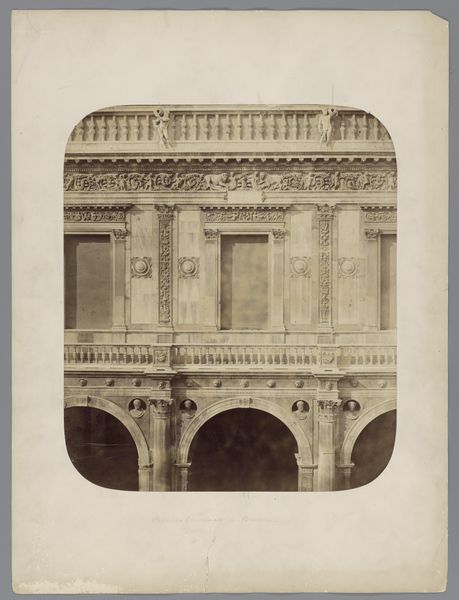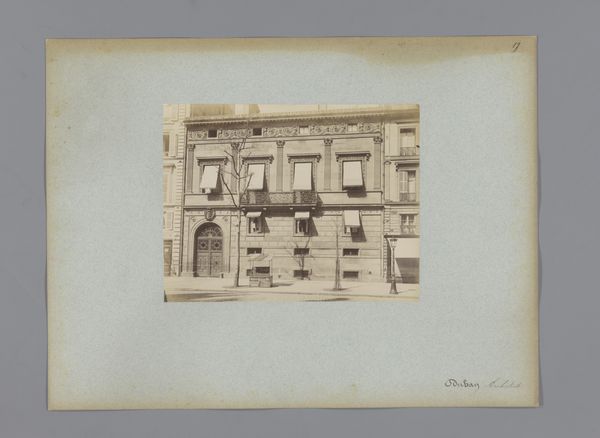
print, photography, albumen-print
# print
#
photography
#
coloured pencil
#
cityscape
#
albumen-print
Dimensions: height 244 mm, width 183 mm
Copyright: Rijks Museum: Open Domain
Editor: Here we have an albumen print from sometime between 1880 and 1920, showing the Passage Umberto I in Naples. It gives a dizzying impression, almost as if the architecture is about to swallow you up. How do you interpret this work? Curator: Observe the photograph's careful orchestration of line and form. The strong perspective, the way the lines of the architecture converge, create a powerful sense of depth. Note the contrast between the solid, ornate structures and the ephemeral figures populating the space. What strikes you about the placement of those figures within this carefully constructed geometry? Editor: I notice that they are small in comparison to the architecture and seem to blend into the overall composition. Are they intended to be anonymous or an important part of the photograph? Curator: It's precisely that ambiguity that is interesting. They are both present and almost absent. Consider the octagonal shape of the print itself, how that further enhances the receding perspective. Editor: It’s an interesting feature. Was this a standard way to present photos during the late 19th Century? Curator: Its uniqueness draws attention to the print's constructed nature. It asks us to consider photography not just as a record, but as a formal arrangement. We can look closely at the balance between light and shadow, the textures captured by the albumen process, and the repetitive patterns that define the space. What do you think the octagonal format adds to our experience? Editor: I now understand that it brings focus to the subject and creates dynamism by manipulating perspective and light. Thanks. Curator: Exactly. Now consider how that intentional artifice impacts the reading of the space. It reframes how we appreciate historical photography.
Comments
No comments
Be the first to comment and join the conversation on the ultimate creative platform.

